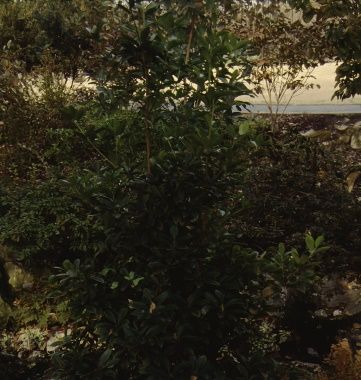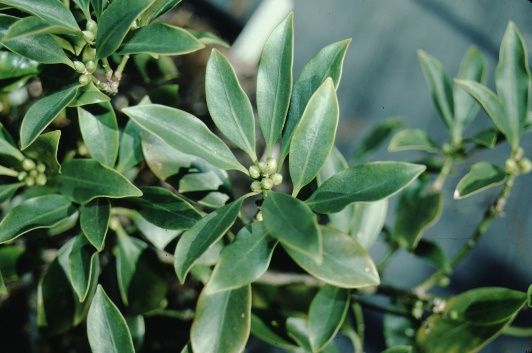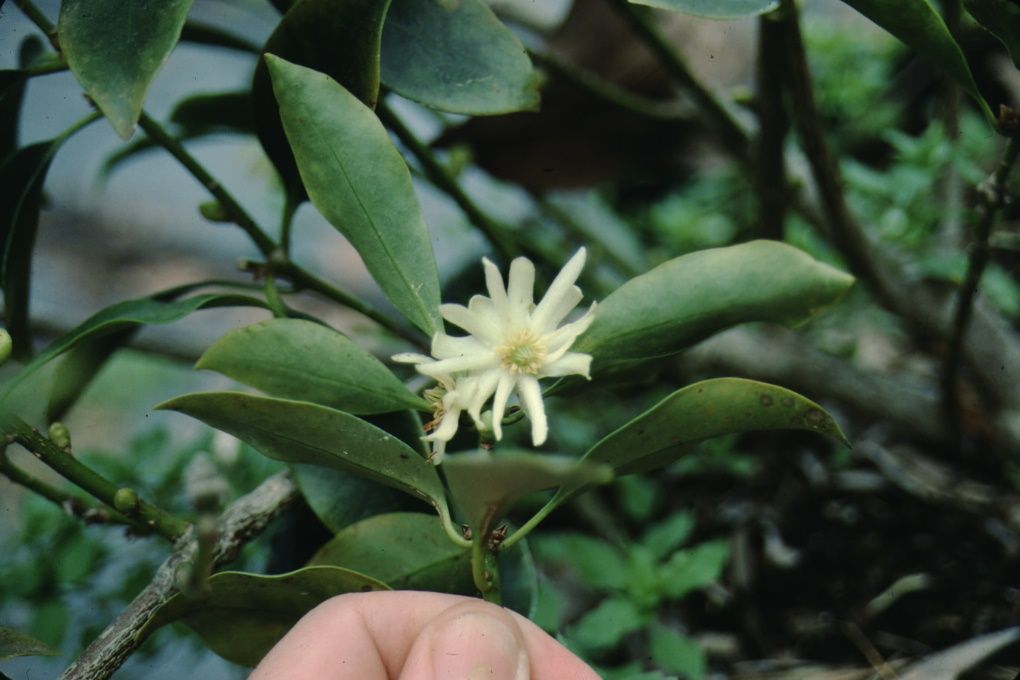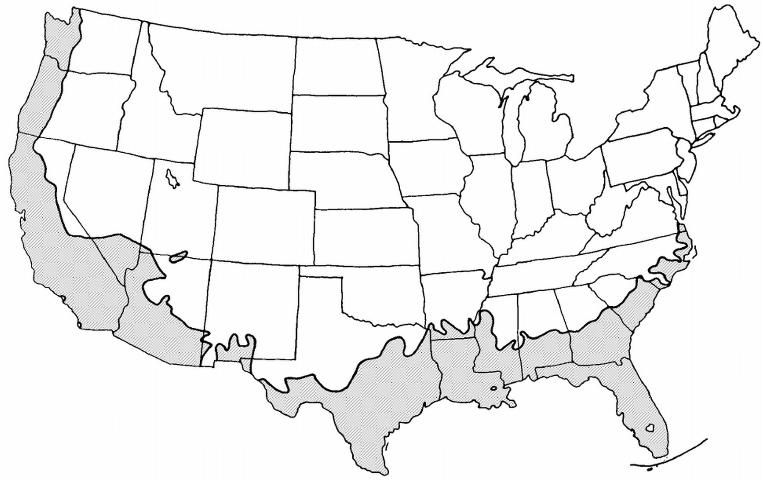Introduction
Illicium anisatum is an upright, rounded, bushy shrub or small tree that attains a height of 10 to 15 feet. The foliage of this plant is exceptional. In contrast to Illicium parviflorum and Illicium floridanum, the evergreen leaves of Illicium anisatum are a lustrous medium to dark green color with undulate margins. All anise leaves smell a little like root beer when they are crushed. Leaves of anise tree are generally 2 to 4 inches long, a little smaller than those on the other two species. Many yellowish-white or greenish-white flowers, with up to 30 petals, are produced in spring. These axillary flowers are star-shaped and have no fragrance, but can be showy if you are close to the plant. They are produced in abundance in some years. The fruits of the anise tree are star-shaped follicles that eventually release dark brown seeds.

Credit: Edward F. Gilman, UF/IFAS

Credit: Edward F. Gilman, UF/IFAS

Credit: Edward F. Gilman, UF/IFAS
General Information
Scientific name: Illicium anisatum
Pronunciation: ill-LISS-ee-um an-niss-SAY-tum
Common name(s): Japanese anise tree
Family: Illiciaceae
Plant type: tree
USDA hardiness zones: 8 through 10 (Figure 4)
Planting month for zone 7: year round
Planting month for zone 8: year round
Planting month for zone 9: year round
Planting month for zone 10: year round
Origin: not native to North America
Invasive potential: not known to be invasive
Uses: hedge; espalier; screen; foundation; border
Availability: somewhat available, may have to go out of the region to find the plant

Credit:
Description
Height: 10 to 15 feet
Spread: 8 to 15 feet
Plant habit: oval
Plant density: dense
Growth rate: moderate
Texture: medium
Foliage
Leaf arrangement: alternate
Leaf type: simple
Leaf margin: undulate
Leaf shape: ovate
Leaf venation: none, or difficult to see
Leaf type and persistence: fragrant
Leaf blade length: 2 to 4 inches
Leaf color: green
Fall color: no fall color change
Fall characteristic: not showy
Flower
Flower color: yellow
Flower characteristic: pleasant fragrance; summer flowering
Fruit
Fruit shape: irregular
Fruit length: 0.5 to 1 inch
Fruit cover: dry or hard
Fruit color: green
Fruit characteristic: inconspicuous and not showy
Trunk and Branches
Trunk/bark/branches: typically multi-trunked or clumping stems; can be trained to grow with a short, single trunk; not particularly showy
Current year stem/twig color: green
Current year stem/twig thickness: medium
Culture
Light requirement: plant grows in part shade/part sun
Soil tolerances: acidic; slightly alkaline; sand; loam; clay;
Drought tolerance: moderate
Soil salt tolerances: poor
Plant spacing: 36 to 60 inches
Other
Roots: usually not a problem
Winter interest: no special winter interest
Outstanding plant: not particularly outstanding
Pest resistance: no serious pests are normally seen on the plant
Use and Management
This plant is most useful as the base green mass in a shrub border. Its large size makes it well suited for creating a screen to maintain a visual and noise barrier. The anise tree is ideal for shady natural areas and may also be used for foundation plantings if you do not mind the regular clipping that will be needed to maintain it as a hedge. Some people have trained them into small trees for planting near a patio or deck.
Illicium anisatum is adaptable, growing in a full sun to mostly shaded location in the landscape and performs best on a moist, well-drained, rich soil. It is moderately tolerant of drought but has a low salt spray tolerance. Annual pruning may be necessary if one is attempting to maintain this plant as a shrub. Little fertilizer appears to be necessary to maintain good foliage color and growth in the landscape.
There is a white flowered form of the plant available at some garden centers. Propagate the anise tree by seed, semi-ripe cuttings, or by simple layering.
Pests and Diseases
No pests or diseases are of major concern. Mites and scales may be troublesome on occasion.